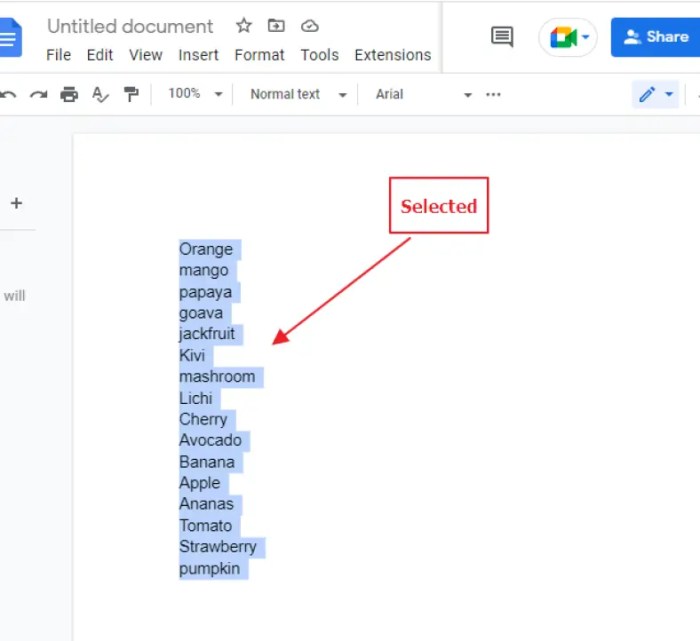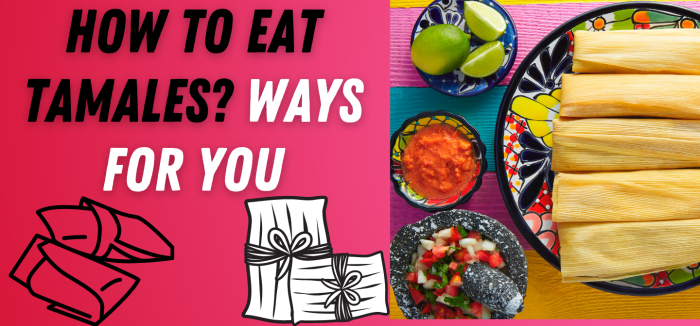
Tamales, a beloved culinary creation, are a staple in many cultures, offering a delightful combination of flavors and textures. Understanding the art of eating a tamale is crucial to fully appreciate its deliciousness. This comprehensive guide will explore the various techniques, customs, and cultural significance surrounding the consumption of tamales, ensuring you savor every bite.
From unwrapping methods to exploring diverse fillings and toppings, we will delve into the intricacies of tamale etiquette and uncover the health benefits associated with this delectable treat. Whether you’re a seasoned tamale enthusiast or a curious novice, this guide will provide you with invaluable insights into the world of tamales.
Unwrapping Techniques
Unwrapping a tamale is an essential step to savor its deliciousness. The traditional method involves carefully peeling back the outer corn husk, starting from the wide end. By holding the tamale upright, you can gently pull the husk away from the masa, revealing the flavorful filling.For
a quicker and easier method, consider cutting off the top and bottom of the husk, then slicing it down the side. This allows you to unfold the husk and easily access the tamale.
Alternative Methods
If you’re in a hurry or want to avoid any mess, try these alternative unwrapping techniques:
- Microwave method: Wrap the tamale in a damp paper towel and microwave it for 30 seconds. The husk will soften, making it easier to peel.
- Steaming method: Place the tamales in a steamer basket over boiling water for 5-10 minutes. The steam will loosen the husk, allowing you to remove it effortlessly.
- Boiling method: Submerge the tamales in a pot of boiling water for 2-3 minutes. The husk will soften significantly, making it easy to peel off.
Tamale Sauces and Toppings
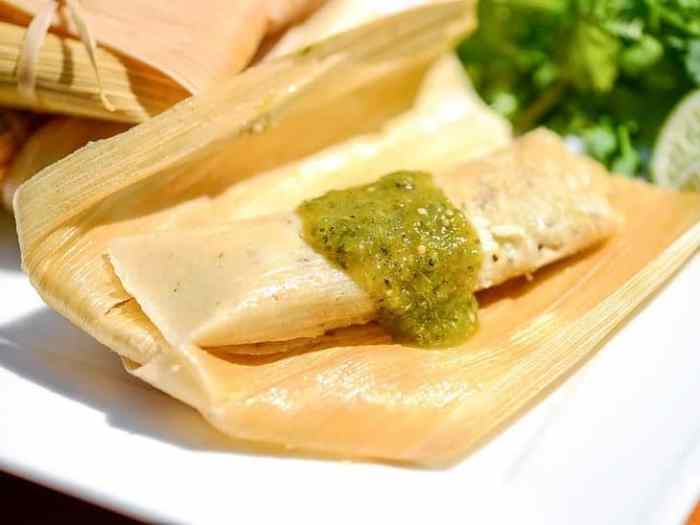
Tamales are delicious on their own, but adding sauces and toppings can elevate the experience to new heights. Here are some popular tamale sauce recipes and traditional toppings to try.
Tamale Sauces
There are many different types of tamale sauces, each with its own unique flavor profile. Some of the most popular include:
- Red Chile Sauce: This is a classic tamale sauce made with dried red chiles, tomatoes, and spices. It has a smoky, slightly spicy flavor that pairs well with both sweet and savory tamales.
- Green Chile Sauce: This sauce is made with fresh green chiles, tomatillos, and cilantro. It has a bright, tangy flavor that is perfect for tamales with a milder filling.
- Mole Sauce: This complex sauce is made with a variety of ingredients, including chiles, nuts, seeds, and spices. It has a rich, chocolatey flavor that is perfect for special occasion tamales.
Traditional Toppings
In addition to sauces, there are a number of traditional toppings that can be added to tamales. These include:
- Cheese: Shredded cheese is a classic tamale topping. It adds a creamy, cheesy flavor that complements the other flavors in the tamale.
- Sour Cream: Sour cream is another popular tamale topping. It adds a tangy, cooling flavor that helps to balance out the spiciness of the tamale.
- Avocado: Sliced avocado is a refreshing and flavorful topping for tamales. It adds a creamy, buttery flavor that pairs well with both sweet and savory tamales.
- Salsa: Salsa is a great way to add some extra spice and flavor to your tamales. Choose a salsa that you enjoy, and add it to taste.
Unique and Flavorful Topping Combinations
If you’re looking for something a little different, try one of these unique and flavorful topping combinations:
- Mango Salsa: This sweet and tangy salsa is made with fresh mango, tomatoes, onions, and cilantro. It’s a great topping for tamales with a sweet filling.
- Pineapple Salsa: This salsa is made with fresh pineapple, tomatoes, onions, and cilantro. It has a bright, tropical flavor that is perfect for tamales with a savory filling.
- Guacamole: Guacamole is a creamy, avocado-based dip that is a great topping for tamales. It adds a rich, flavorful flavor that pairs well with both sweet and savory tamales.
Tamale Filling Variations
Tamales, a beloved Mexican dish, showcase a diverse array of fillings that vary by region and personal preference. From classic meaty fillings to vegetarian delights, there’s a tamale filling to satisfy every palate.
Classic Fillings
Traditional tamale fillings include:
- Pork: Slow-cooked pork shoulder or ribs, seasoned with spices and often shredded.
- Chicken: Roasted or braised chicken, shredded or diced.
- Beef: Ground beef, seasoned with chili powder and cumin.
- Cheese: Oaxaca or Monterey Jack cheese, shredded or sliced.
- Beans: Refried beans, often mixed with cheese or meat.
Regional Variations
Regional variations in tamale fillings reflect the local cuisines and ingredients:
- Oaxaca: Mole sauce and Oaxacan cheese.
- Veracruz: Seafood, such as shrimp or fish.
- Yucatan: Cochinita pibil (slow-roasted pork in achiote sauce).
- Chiapas: Beans and plantains.
Unique and Innovative Fillings
Contemporary chefs have experimented with innovative tamale fillings, pushing the boundaries of this classic dish:
- Sweet Potato and Black Bean: Roasted sweet potatoes, black beans, and spices.
- Roasted Vegetables: A medley of roasted vegetables, such as zucchini, peppers, and onions.
- Quinoa and Avocado: Quinoa, mashed avocado, and a touch of lime juice.
- Lobster and Shrimp: Chunks of lobster and shrimp, sautéed in butter and herbs.
Tamale Presentation
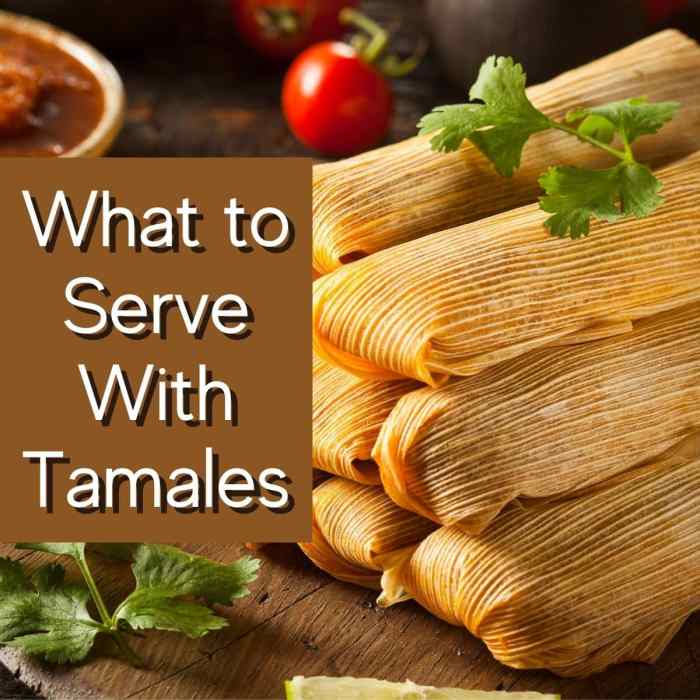
When serving tamales, presentation is key to enhancing their visual appeal and making them more appetizing. Here are some tips for arranging and garnishing tamales:
Arranging Tamales on a Plate
*
-*Stacking
Stack tamales upright on a plate, alternating the direction of each tamale to create a visually appealing pyramid shape.
-
-*Overlapping
Overlap tamales slightly to create a cozy and inviting presentation. This also helps keep them warm.
-*Fanning
Arrange tamales in a fan shape, with the open ends facing outward. This allows guests to easily see the fillings and garnishes.
Garnishing Tamales
*
-*Fresh Herbs
Sprinkle chopped fresh herbs like cilantro, parsley, or chives over the tamales for a vibrant pop of color and flavor.
-
-*Salsa or Sauces
Drizzle your favorite salsa or sauce over the tamales to add flavor and heat.
-
-*Sour Cream
Add a dollop of sour cream to the side of the tamales for a cooling and creamy contrast.
-*Cheese
Sprinkle grated cheese over the tamales for a cheesy and indulgent topping.
Creative Tamale Presentations
*
-*Appetizer Skewers
Cut tamales into bite-sized pieces and thread them onto skewers with other appetizers like grilled vegetables or shrimp.
-
-*Tamale Cups
Hollow out the center of a tamale and fill it with your favorite fillings, such as guacamole, salsa, or cheese.
-*Tamale Bites
Cut tamales into small squares and serve them as bite-sized appetizers with dipping sauces.
Tamale Storage and Preservation
To ensure the freshness and quality of your tamales, proper storage techniques are crucial. Here’s a comprehensive guide to storing and preserving tamales effectively:
Fresh Tamale Storage
Freshly made tamales can be stored in an airtight container or wrapped in plastic wrap and refrigerated for up to 3 days. The cooler temperatures slow down the growth of bacteria, preserving the tamales’ flavor and texture.
Freezing Tamales
For long-term preservation, freezing tamales is an excellent option. Wrap individual tamales tightly in plastic wrap or aluminum foil, then place them in a freezer-safe bag or container. Frozen tamales can be stored for up to 3 months.
Reheating Tamales
To reheat tamales, several methods can be employed:
- Steaming: Wrap tamales in damp paper towels and steam for 15-20 minutes, or until heated through.
- Microwaving: Place tamales on a microwave-safe plate and heat on high for 2-3 minutes, or until warmed.
- Oven: Preheat oven to 350°F (175°C) and wrap tamales in aluminum foil. Bake for 15-20 minutes, or until heated through.
Cultural Significance of Tamales
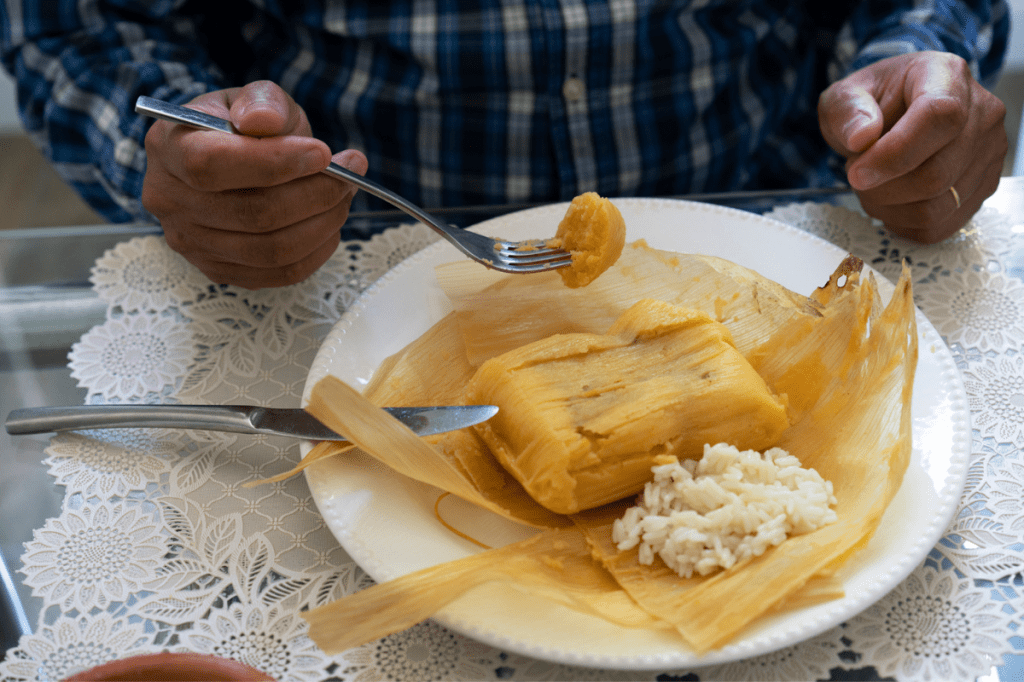
Tamales hold a significant place in the history and culture of many countries in the Americas. They are not merely a food but also a symbol of tradition, family, and celebration.Tamales have been a staple food in Mesoamerica for centuries, dating back to pre-Columbian times.
They were a valuable source of sustenance for ancient civilizations and played a central role in religious ceremonies and festivals. In many cultures, tamales are still closely associated with special occasions such as weddings, births, and holidays like Christmas and Day of the Dead.
Role in Traditional Celebrations
Tamales are deeply intertwined with traditional celebrations throughout the Americas. In Mexico, they are a central part of the Christmas and Day of the Dead festivities. Families gather to make tamales together, sharing stories and laughter as they prepare this special dish.
Tamales are also a symbol of hospitality and are often offered to guests as a sign of welcome and generosity.In Guatemala, tamales are a beloved street food enjoyed by people from all walks of life. They are commonly sold in markets and street stalls, providing a quick and affordable meal option.
In El Salvador, tamales are a staple of the traditional pupusa meal, which also includes beans and cheese.
Anecdotes and Stories
There are countless anecdotes and stories related to tamale traditions. In one such story, a young woman named Maria prepares tamales with her grandmother every Christmas. As they work together, Maria learns about the history of her family and the importance of passing down traditions.In
another story, a group of friends gathers to make tamales for a neighborhood potluck. As they share laughter and stories, they create a sense of community and belonging. These anecdotes highlight the deep cultural significance of tamales and their ability to connect people.
Tamale Health Benefits
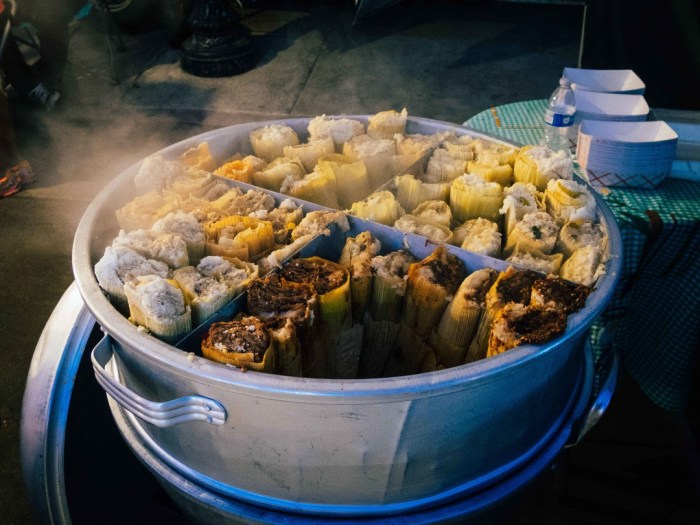
Tamales are a delicious and nutritious food that can be enjoyed as part of a healthy diet. They are a good source of complex carbohydrates, protein, and fiber. Tamales also contain a variety of vitamins and minerals, including vitamin A, vitamin C, potassium, and iron.The
health benefits of tamale ingredients include:*
-*Corn
Corn is a good source of fiber, which can help to promote regularity and lower cholesterol levels. It is also a good source of antioxidants, which can help to protect the body against damage from free radicals.
-
-*Meat
Meat is a good source of protein, which is essential for building and repairing tissues. It is also a good source of iron, which is necessary for carrying oxygen throughout the body.
-
-*Masa
Masa is a type of corn flour that is used to make tamales. It is a good source of carbohydrates, which can provide energy for the body.
-*Vegetables
Vegetables are a good source of vitamins, minerals, and antioxidants. They can help to boost the immune system and protect the body against disease.
Tips for making tamales healthier without sacrificing flavor include:*
-*Use lean meats
Lean meats are lower in saturated fat and cholesterol than fatty meats.
-
-*Add vegetables
Vegetables can add flavor and nutrients to tamales. Try adding chopped onions, peppers, or tomatoes to your tamales.
-
-*Limit the amount of lard
Lard is a type of saturated fat that can raise cholesterol levels. Try using olive oil or vegetable oil instead of lard.
-*Use whole-wheat masa
Whole-wheat masa is a good source of fiber.
Tamale Etiquette
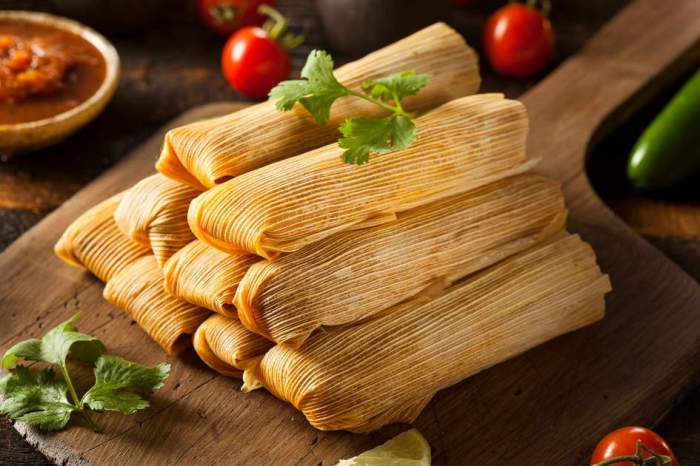
Proper tamale etiquette enhances the dining experience and demonstrates respect for the cultural significance of this beloved dish.
Here are some key table manners and cultural customs to consider:
Proper Table Manners
- Hold the tamale upright: Grip the tamale firmly at the base and keep it vertical to prevent fillings from spilling out.
- Unwrap carefully: Peel back the corn husk slowly and gently to avoid tearing the tamale.
- Eat with your hands: Tamales are traditionally eaten with your hands, allowing you to fully appreciate their texture and flavor.
- Take small bites: Avoid taking large bites to prevent the tamale from falling apart.
- Use a fork for fillings: If the tamale has loose fillings, such as beans or cheese, you may use a fork to scoop them up.
Cultural Customs
In some cultures, there are specific customs associated with tamale consumption:
- Offer the first tamale to guests: It is considered a sign of hospitality to offer the first tamale to visitors or guests.
- Share tamales: Tamales are often shared among family and friends, symbolizing unity and community.
- Respect the corn husk: The corn husk is not only a wrapper but also a symbol of the tamale’s indigenous origins. It is considered disrespectful to throw the husk on the floor.
Social Situations
Navigating social situations involving tamales requires a combination of etiquette and cultural awareness:
- Offer to share: If you have extra tamales, it is polite to offer them to others.
- Be mindful of the surroundings: When eating tamales in public, be aware of the mess that can be created and clean up after yourself.
- Respect cultural differences: Be respectful of different cultural customs related to tamale consumption and avoid making insensitive comments.
Tamale Innovations
Tamales, a beloved traditional dish, continue to evolve and innovate. Creative chefs and home cooks alike are experimenting with new flavors, ingredients, and cooking techniques, resulting in a wide range of contemporary tamale variations.
Modern Tamale Recipes
Modern tamale recipes often incorporate unexpected ingredients and flavors, such as:
-
-*Sweet Tamales
Tamales filled with sweet fillings like fruit, chocolate, or cream cheese, often served as desserts.
-
-*Gourmet Tamales
Tamales elevated with premium ingredients, such as artisanal cheeses, gourmet meats, and exotic spices.
-*Savory Tamales
Tamales with unique savory fillings, such as pulled pork, roasted vegetables, or even pizza toppings.
Latest Trends in Tamale Making
-
-*Instant Pot Tamales
The convenience of pressure cookers has made it easier to make tamales at home, resulting in a surge in popularity.
-
-*Tamale Casseroles
Baking tamales in a casserole dish creates a comforting and easy-to-share dish, suitable for large gatherings.
-*Air Fryer Tamales
Air fryers provide a crispy exterior and tender interior, offering a healthier alternative to traditional frying methods.
Incorporating Tamales into Modern Cuisine
Tamales are no longer limited to traditional Mexican cuisine but have found their way into contemporary menus.
Chefs are incorporating tamales into:
-
-*Appetizers
Bite-sized tamales served as finger food at parties or as part of a tapas menu.
-
-*Desserts
Sweet tamales as a unique and flavorful dessert option, often served with ice cream or whipped cream.
Closing Summary

In conclusion, eating a tamale is not merely a culinary experience but a cultural immersion. It is a testament to tradition, creativity, and the joy of sharing. Whether you prefer traditional methods or modern innovations, embracing the nuances of tamale consumption will enhance your appreciation for this beloved dish.
So, gather your loved ones, savor the flavors, and immerse yourself in the rich heritage of tamales.
-*Entrees
Tamales as the main course, accompanied by a variety of sauces and toppings.

